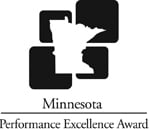
Regular exercise is vital for seniors' health and well-being. While arthritis can cause joint pain and swelling, avoiding movement weakens the supporting muscles and worsens the issue. Staying active helps maintain joint strength and overall fitness. As the Mayo Clinic advises, “when arthritis tries to slow you down, exercise can keep you moving.”
But it has to be the right kind of exercise–movements that help maintain muscle and bone strength and joint flexibility without putting undue pressure on your joints.
Appropriate senior exercise can also help:
- Reduce joint pain
- Improve balance
- Boost energy and mood
- Improve sleep
- Control weight
PREPARING TO EXERCISE
Different types of arthritis, and which of your joints are affected, can influence how and when you exercise. So talk to your doctor about the types and amounts of exercise that will be best for you.
Always warm up your muscles by stretching for five minutes before starting to exercise. If your joints hurt, you can also apply a warm towel or hot pack for up to 20 minutes.
The goal is to push yourself but not until it hurts! This is why low-impact exercises are so valuable. Start slowly, work up to more over time, and if something does feel painful, stop.
LOW-IMPACT IS THE KEY
We use our joints and muscles in multiple ways, so it’s important to exercise in multiple ways as well. A formal exercise plan keeps you on track, but everyday activities such as walking and housework also keep you bending and moving. So do the things you do for fun, alone or with friends–golf, bocce ball, shuffleboard, cycling, and walking outdoors are all low-impact exercise options.
Range-of-Motion Exercises
These support flexibility and dexterity. You can do these every day. Do them first before more strenuous exercises.
Rotate your neck, arms, and ankles in both directions. Stretch your arms over your head. Shrug your shoulders in forward and backward circles. Touch your thumb to each fingertip to form a circle.
Balance and Flexibility Exercises
These help improve posture and, importantly, prevent falls.
Yoga, tai chi, and Pilates are all good choices for both exercise and relaxation. In fact, yoga can help reduce disease activity in rheumatoid arthritis. Yoga and tai chi can also be practiced while sitting.
Strength Training
Weight training improves both bone and muscle strength. These exercises should be done at least twice a week, but not on consecutive days.
You can use gym equipment, but hand weights, resistance bands, or a Pilates ring all help build strength with low impact. Elliptical machines are also appropriate for those with arthritis.
Aerobic Exercise
This gets your heart pumping, which improves cardiovascular health and circulation to the muscles. For most seniors, the goal is 150 minutes of aerobic exercise per week, but you can do just 10 minutes at a time if that works best.
Good examples include walking, swimming, water walking and water aerobics, using an elliptical machine, and bicycling outdoors on a stationary bike (a recumbent bike reduces pressure on knee joints).
FITNESS IS A PILLAR OF OUR PLATINUM LIFESTYLE®
Maintaining personal health and well-being is critical for seniors who want to remain as independent and active as possible. The Goodman Group’s managed senior living communities feature comfortable spaces for exercising, the latest equipment including zero-impact, anti-gravity treadmills, and our own FIT Functional Fitness® program developed especially to help residents tailor exercise to their bodies.

